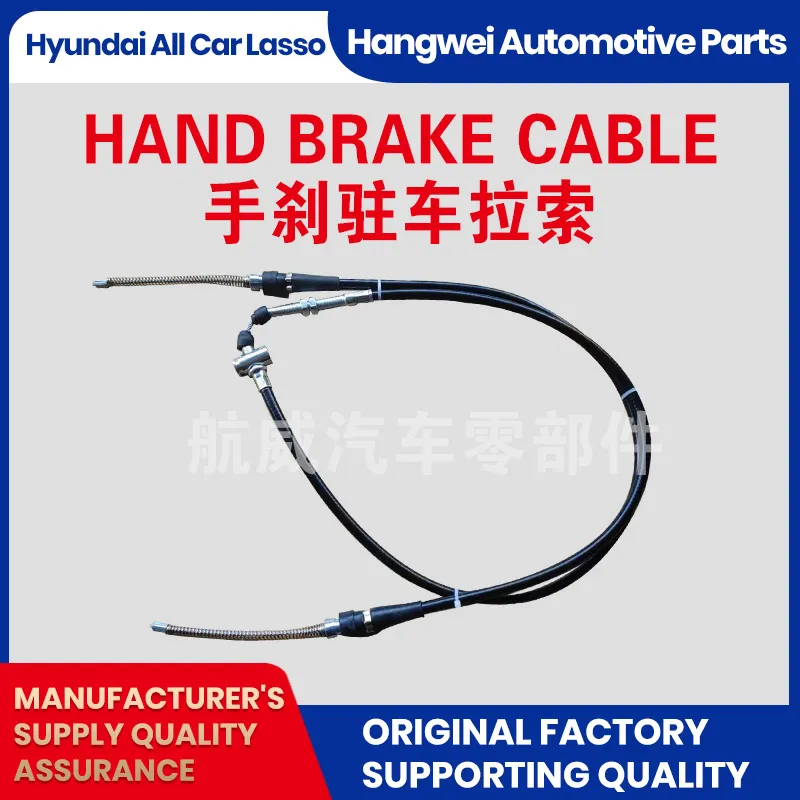Understanding Gear Link Cable Functionality and Its Importance in Mechanics
Understanding Gear Link Cables A Guide for Enthusiasts and Professionals
In the world of automotive engineering and maintenance, the intricacies of a vehicle’s mechanical systems play a crucial role in its performance and functionality. Among the many components that contribute to the seamless operation of a vehicle's transmission system, gear link cables, often referred to as gear shift cables or linkage cables, are of paramount importance. These components not only facilitate the connection between the gear lever and the transmission system but also ensure a smooth and responsive driving experience. In this article, we’ll explore the significance of gear link cables, their functionality, and what to consider when dealing with them.
What Are Gear Link Cables?
Gear link cables are flexible mechanical cables that link the gear shifter to the transmission in both manual and automatic vehicles. They act as an intermediary that transmits the driver’s input from the gear lever to the transmission system, signaling it to switch gears accordingly. When a driver moves the gear lever, the cable pulls or pushes, engaging the necessary gears in the transmission.
These cables are often made from durable materials capable of withstanding constant movement and tension. Typically, they are coated with a protective layer to reduce wear and tear from friction and external elements, ensuring longevity and consistent performance.
The Importance of Gear Link Cables
1. Smooth Gear Transition One of the primary functions of gear link cables is to ensure smooth gear transitions. A well-functioning gear cable allows drivers to shift gears seamlessly, enhancing the overall driving experience. If a cable becomes worn or damaged, it can lead to stiff or awkward shifting, making driving less enjoyable and even risky.
2. Reliability For many car enthusiasts and professionals, reliability is critical. Gear link cables are designed to be resilient and reliable, ensuring that the gear shifting function operates without frequent failure. Regular maintenance checks can identify potential issues before they escalate, thus maintaining vehicle reliability.
3. Safety A malfunctioning gear link cable can pose serious safety risks. In cases where the gear does not engage or disengage correctly, it could lead to accidents or damage to the vehicle. Ensuring that these cables are in good condition is essential for the safe operation of the vehicle.
Signs of a Failing Gear Link Cable
gear link cable

Recognizing the symptoms of a declining gear link cable is crucial for vehicle maintenance. Here are some common signs that indicate a cable may need replacement
- Difficulty in Shifting Gears If you experience resistance or difficulty in changing gears, it may be time to inspect the gear link cable for wear or damage.
- Unusual Noises Grinding, clunking, or unusual noise when shifting gears can indicate that the cable is not functioning properly.
- Slipping Gears If the car unexpectedly slips out of gear, this can mean that the connection between the shifter and transmission is compromised.
Maintenance and Replacement
Maintaining gear link cables is generally straightforward. Regular inspection during routine vehicle maintenance can help identify signs of wear. Drivers should also be mindful of any changes in their vehicle’s shifting behavior, as early detection of issues can lead to more manageable repairs.
When it comes to replacement, it's advisable to use cables that are specifically designed for your vehicle make and model. This ensures compatibility and optimal performance. While some enthusiasts may choose to handle the replacement themselves, a professional mechanic can provide a full inspection and installation, ensuring that everything is aligned perfectly.
Conclusion
In summary, gear link cables play an essential yet often overlooked role in ensuring a vehicle operates smoothly and safely. Their functionality impacts not only the performance of the transmission but also the overall driving experience. By understanding their importance, recognizing signs of failure, and committing to regular maintenance, drivers can ensure their vehicles perform at their best. Whether you are a casual driver or a car enthusiast, paying attention to these critical components can enhance your automotive experience and contribute to your vehicle's longevity.
-
Workings of Clutch Pipe and Hose SystemsNewsJun.04,2025
-
The Inner Workings of Hand Brake Cable SystemsNewsJun.04,2025
-
The Secrets of Throttle and Accelerator CablesNewsJun.04,2025
-
The Hidden Lifeline of Your Transmission Gear Shift CablesNewsJun.04,2025
-
Demystifying Gear Cables and Shift LinkagesNewsJun.04,2025
-
Decoding Clutch Line Systems A Comprehensive GuideNewsJun.04,2025
